We may receive a commission when you use our affiliate links. However, this does not impact our recommendations.
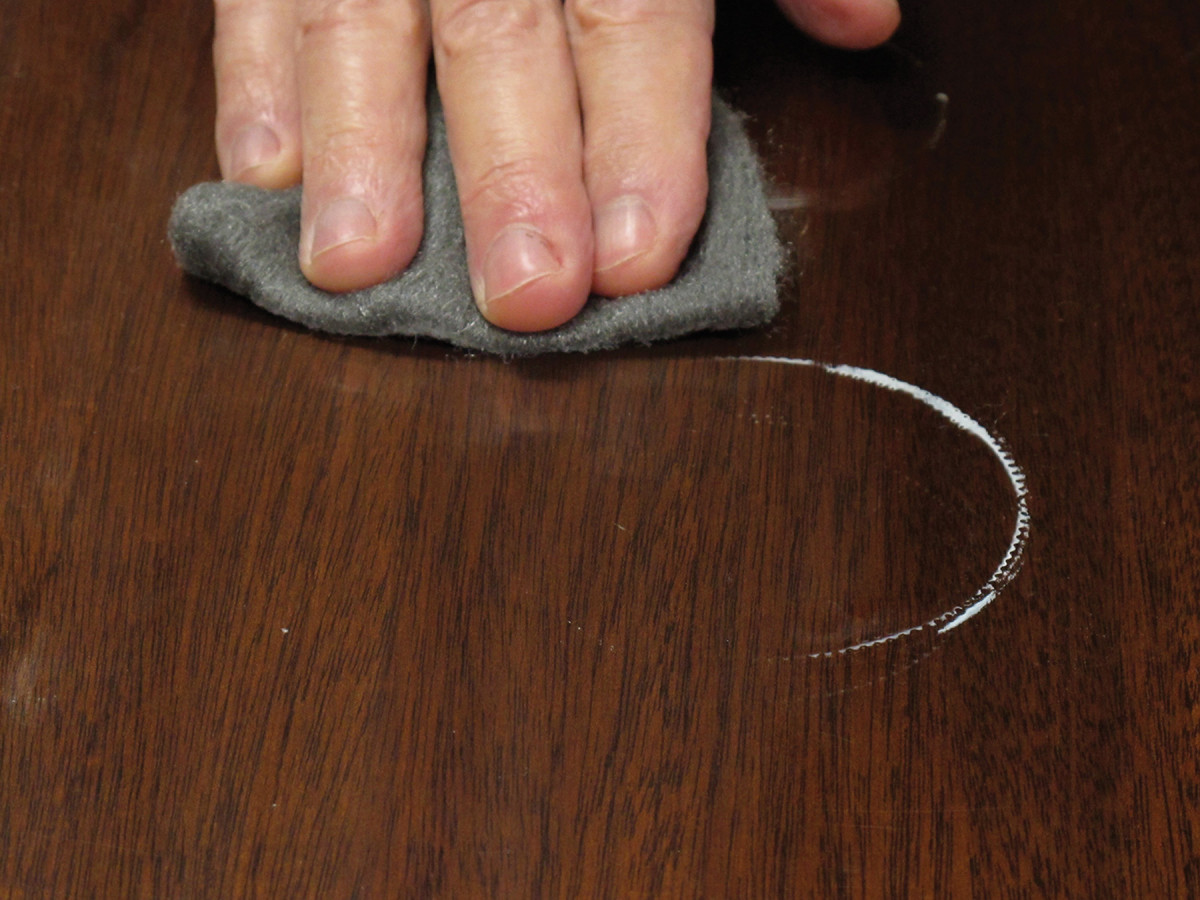
Abrading. Using steel wool or other abrasive to remove watermarks almost always works. But it changes the sheen in the rubbed area, which may cause you to have to rub out the entire surface to make it even again.
Understanding causes and remedies of this typically shallow damage.
A friend sent me a web link to a video and short text recommending the use of mayonnaise to remove white water rings on tabletops thinking that I would scoff at this remedy. I didn’t. I’ve actually seen mayonnaise work fairly well.
But removing white watermarks is unpredictable. There’s no sure-fire procedure. Variables affecting the outcome include the type of finish, how old and porous it is and how long the watermark has been in it.
I wrote about methods for removing white watermarks in the April 2001 issue (#121) of Popular Woodworking Magazine. I don’t have much to add to those, but I can explain better why the marks happen – and knowing what’s going on in the finish helps in understanding the remedies.
Watermarks & Blushing
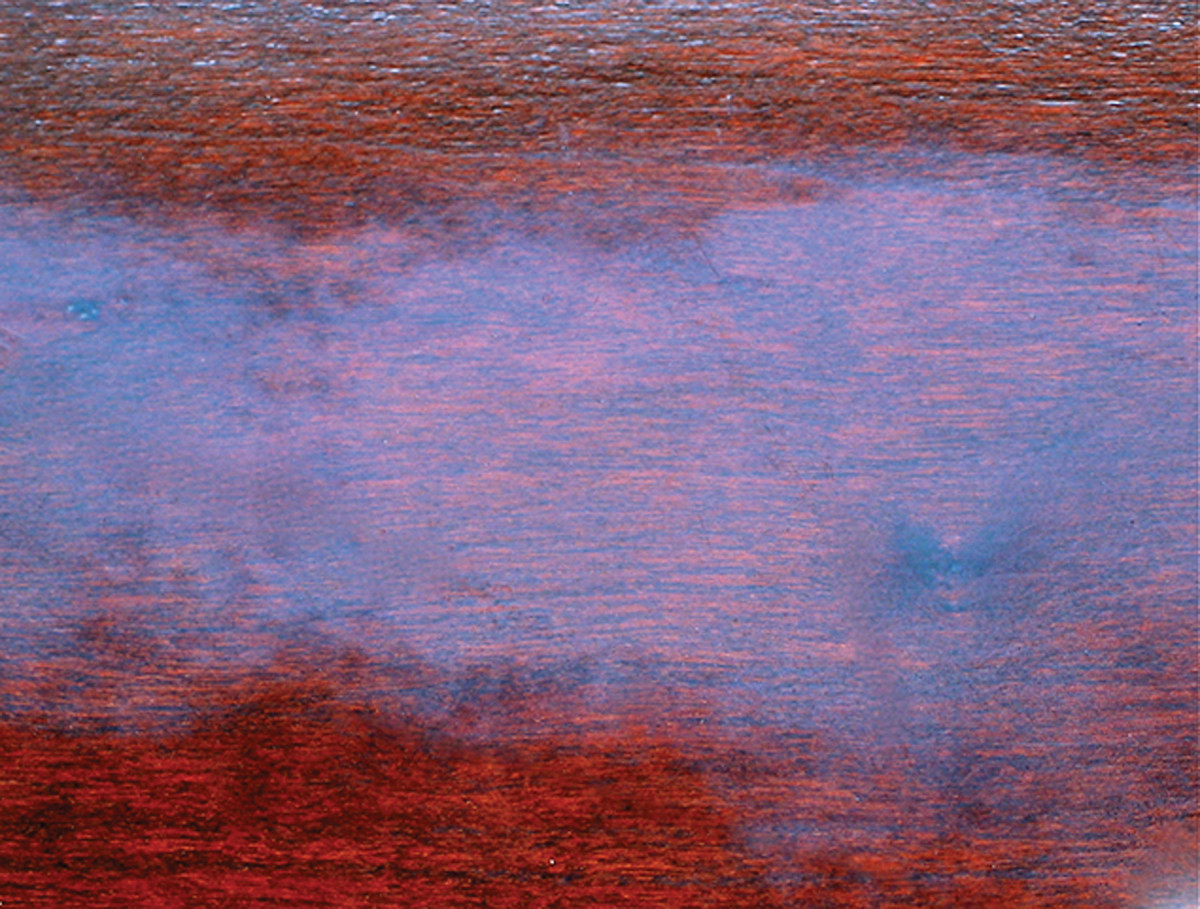
Blushing. When you spray or brush shellac or lacquer on a humid day, the finish might turn milky white. This is similar in its causes to watermarks.
White rings caused by water are similar in their causes and remedies to blushing in lacquer and shellac. When you spray one of these finishes on a humid day, the finish “blushes.” It turns milky white. You can remove this discoloration in one of several ways: abrade through it using steel wool or other abrasive; spray a slow evaporating thinner, such as lacquer retarder, on top; or wait overnight. Sometimes it will disappear on its own.
Abrading works because the blushing is almost always very near the surface. Spraying lacquer retarder works by redissolving the finish at the surface, then taking longer to evaporate to give the moisture time to dry out before the finish dries. Waiting overnight works if there’s still enough solvent in the finish to pack the molecules back down when the moisture evaporates. In the case of shellac with no slower-evaporating solvent available, you can wait for a drier day and spray some denatured alcohol onto the blush. You can do the same with lacquer by spraying lacquer thinner on a drier day.
Blushing doesn’t occur in slower drying finishes such as varnish and water-based finish, but watermarks can occur if the finish is old and crazed.
The same three tricks for removing blushing usually work on watermarks: abrade, redissolve (with lacquer and shellac) or give the mark time to clear up on its own.
Causes
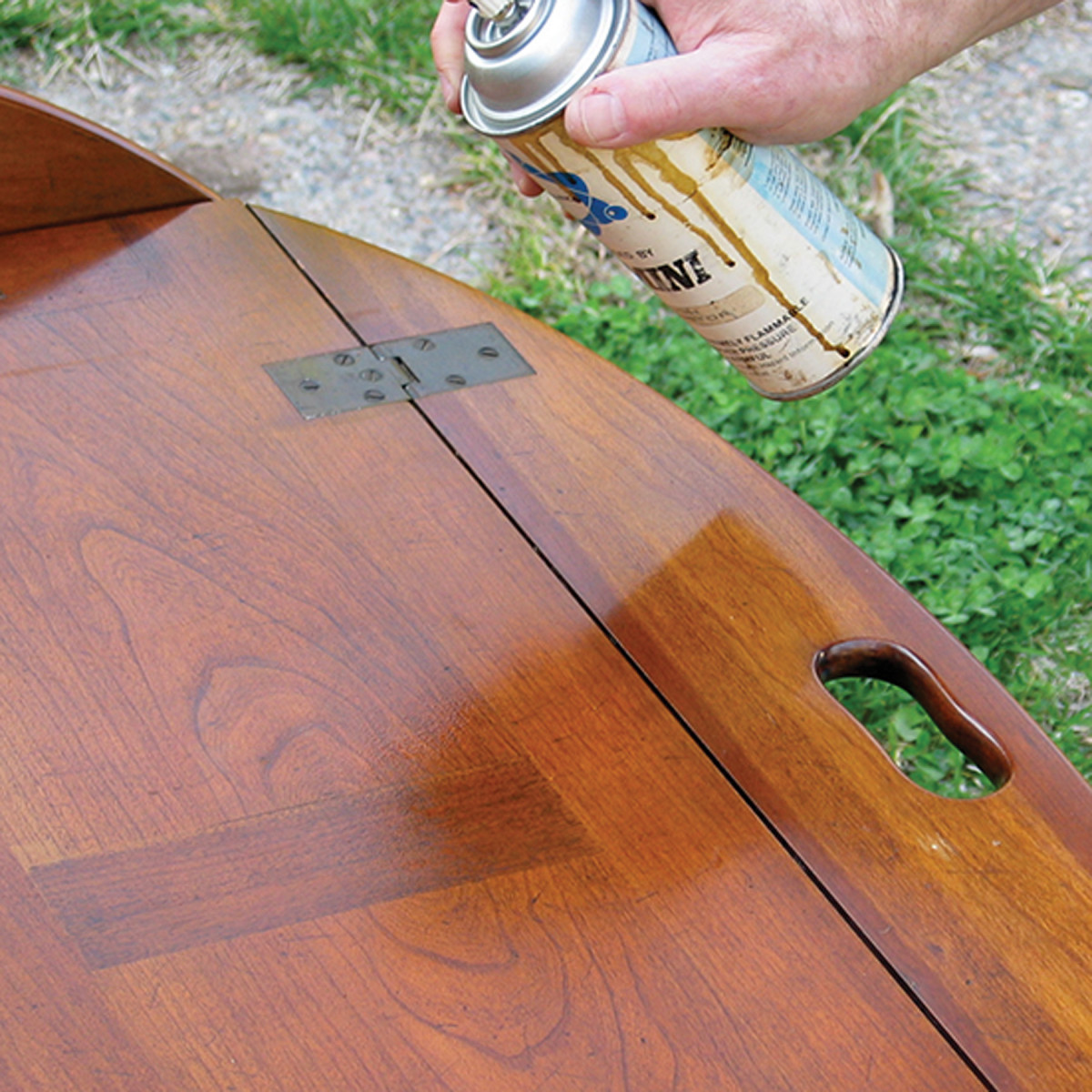
Spraying blush eliminator. Aerosol blush eliminators, sold to the professional trade by some woodworking catalog and by Amazon, are very slow lacquer solvents. Just mist it on the watermark or blushing. A wet coat may cause cratering (“fish eye”).
 So what’s going on in the finish to disrupt the transparency, both in blushing and in watermarks? One of two things. Either tiny water molecules are bonding to the finish causing the disruption of light, or the water molecules are evaporating out through the finish and leaving voids that disrupt the light.
So what’s going on in the finish to disrupt the transparency, both in blushing and in watermarks? One of two things. Either tiny water molecules are bonding to the finish causing the disruption of light, or the water molecules are evaporating out through the finish and leaving voids that disrupt the light.
The second explanation makes more sense to me because it fits better with my experience. It fits better with blushing fading after a short time, and it fits better with a solvent having the effect of removing blushing or watermarks entirely.
It also fits better explaining watermarks. Water enters a somewhat deteriorated and therefore porous finish, dissolves impurities and leaves voids when it dries out.
Either explanation could explain why abrading removes the blushing or watermark. The damage is almost always very near the surface, and you are simply removing that part of the finish.
Removing Watermarks
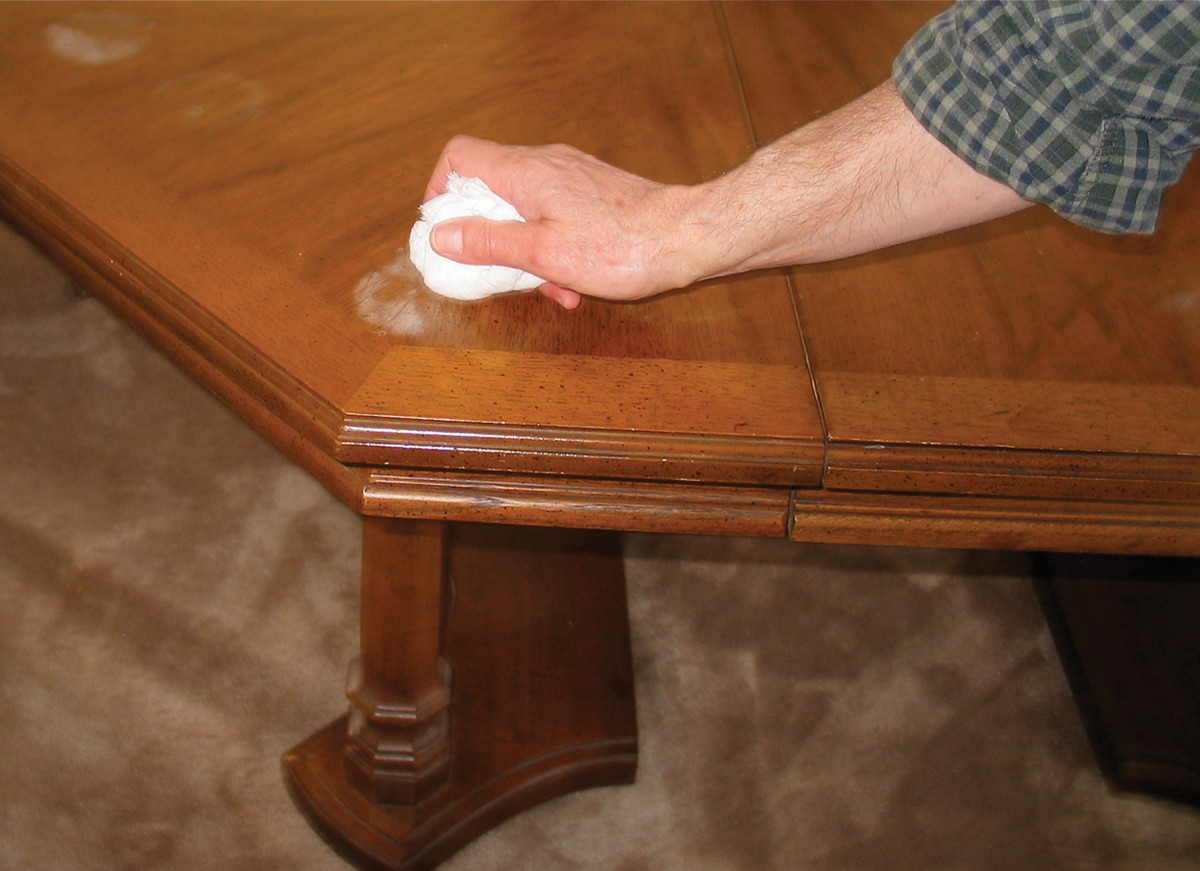
Using alcohol. I showed up at a house unprepared for the dozen or so watermarks on this lacquered table. I didn’t have my aerosol blush eliminator with me so I tried padding with denatured alcohol, keeping the pad just lightly dampened. It worked. I was able to remove all the watermarks. But alcohol doesn’t always work on lacquer.
 The most surefire way to remove watermarks is to abrade them off. This works with all finishes except very high-performance finishes such as catalyzed (conversion) varnish, which are too hard to be removed with fine abrasives. I’ve even been successful removing watermarks with slightly abrasive toothpaste (this was at a relative’s house when no steel wool or sandpaper was available).
The most surefire way to remove watermarks is to abrade them off. This works with all finishes except very high-performance finishes such as catalyzed (conversion) varnish, which are too hard to be removed with fine abrasives. I’ve even been successful removing watermarks with slightly abrasive toothpaste (this was at a relative’s house when no steel wool or sandpaper was available).
The problem with using an abrasive is that it changes the sheen of the finish in the areas you rub. The abrasive makes glossier finishes flatter and flatter finishes glossier. You can play around trying to get the abrasive you’re using just right, but it still creates the sheen with scratches rather than with the flatting agents in the finish, and the scratches will show up differently in reflected light.
The solution for getting the sheen even is to rub out the entire surface. Or you could apply another coat of finish after removing the watermarks.
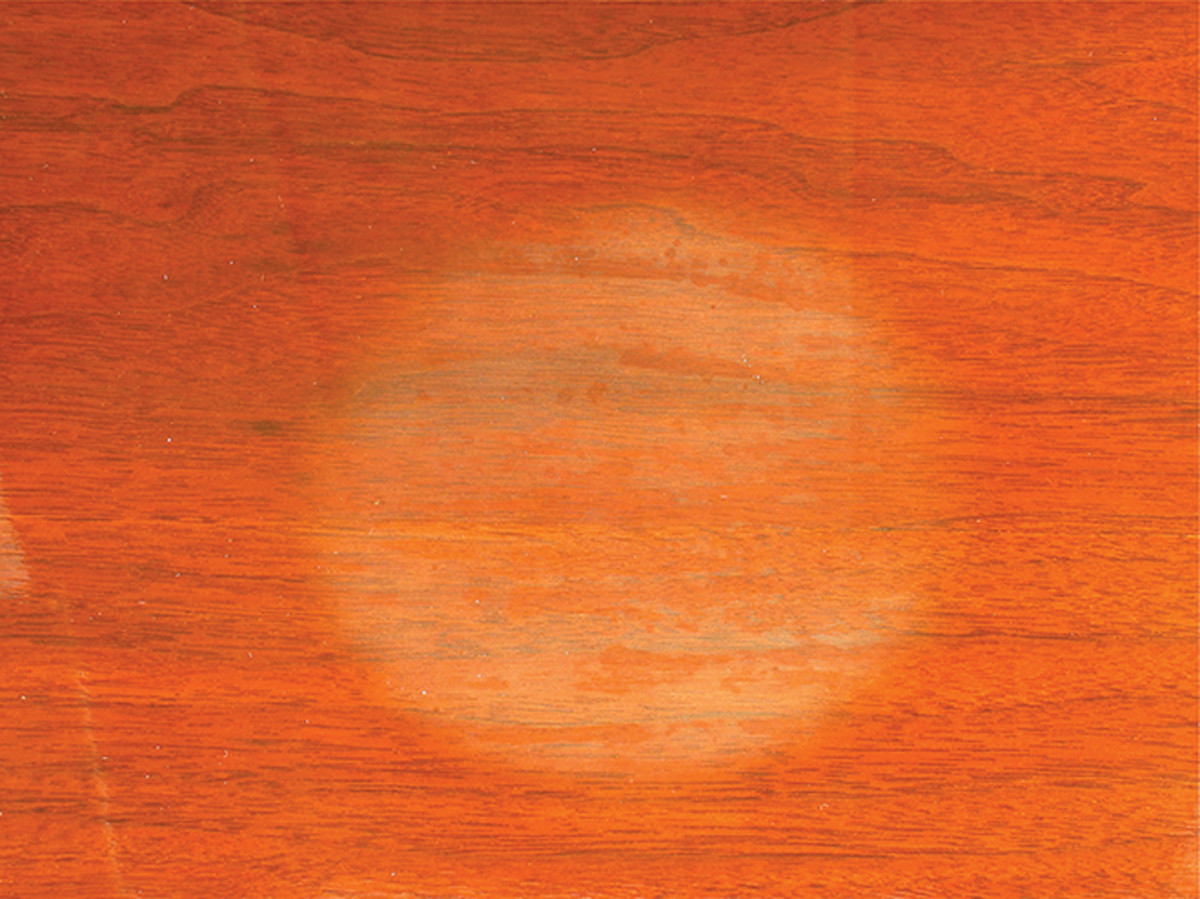
Heat mark. Heat marks like this one from under a hot pizza box are the result of moisture condensation getting into the finish. Unfortunately, this finish was catalyzed (conversion) varnish. It is totally resistant to dissolving or abrading, so I couldn’t remove it. The table had to be stripped (which is a difficult task in itself) and refinished.
Using a solvent to remove watermarks works on shellac and lacquer, which redissolve in contact with their solvent (alcohol for shellac and lacquer thinner for lacquer). Sometimes I’ve even been successful using denatured alcohol on a lacquer finish. Success varies depending on how the lacquer was made.
Just as with blushing, the solvent puts the surface of the finish back into solution so the molecules settle back to fill the voids. With old varnish and water-based finish, which can watermark because the finish is porous, you can’t use a solvent. You’ll have to abrade the finish.
I have also heard of using a heat gun to remove watermarks. Basically, you’re heating the finish to put it back in solution so the voids disappear. This works only with shellac and lacquer, but as you can imagine it’s risky because, if you get the surface too hot, you may cause the finish to blister.
Mayonnaise
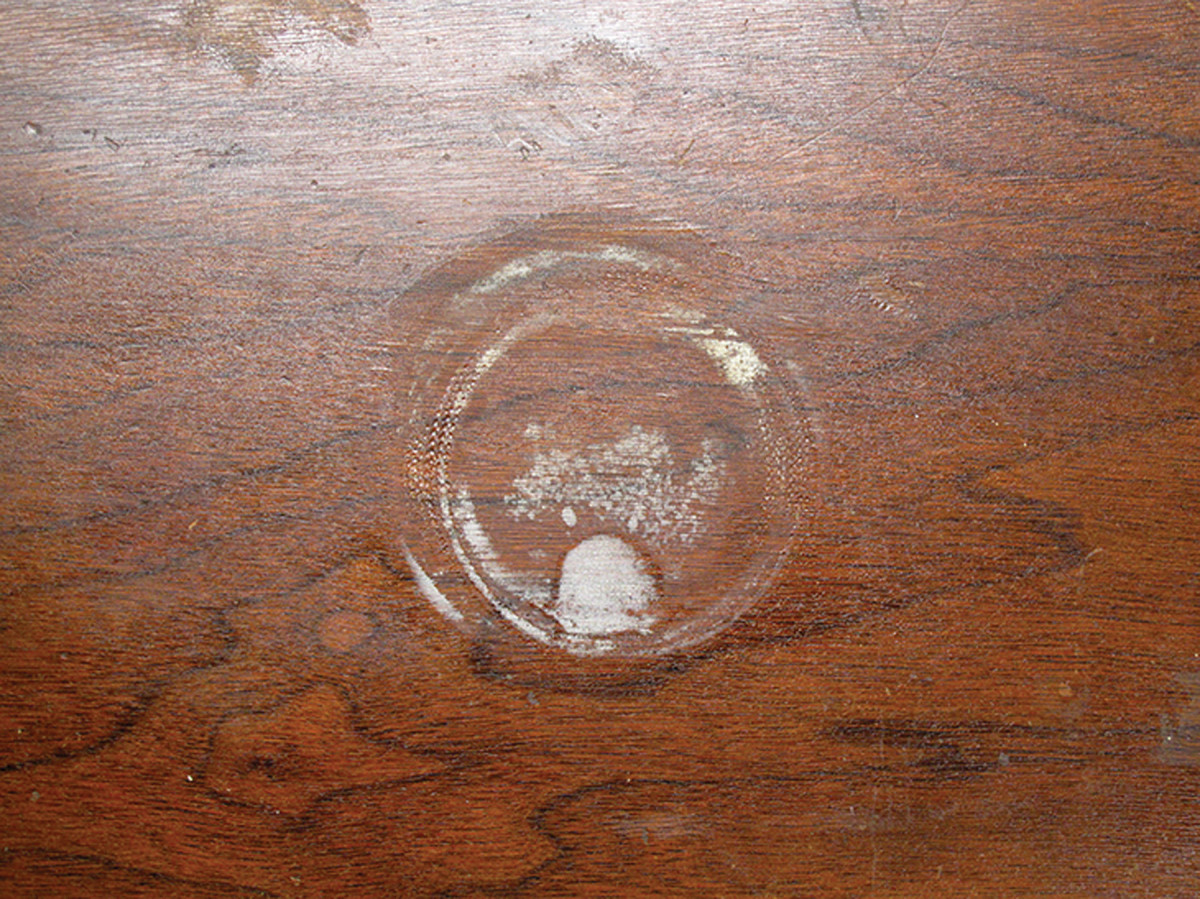
Deteriorated finish. Water rings in old, deteriorated finishes are often impossible to remove. Using a solvent might work, but the amount of solvent needed might change the sheen in the affected area, thus not improving the situation much.
So why does mayonnaise sometimes work, at least in making the watermark fade a little? It’s because the mayonnaise gets into the finish the same way the water did and fills the voids. Furniture polish isn’t effective because it evaporates, but the mayonnaise doesn’t, at least for a long time.
Here are some supplies and tools we find essential in our everyday work around the shop. We may receive a commission from sales referred by our links; however, we have carefully selected these products for their usefulness and quality.








